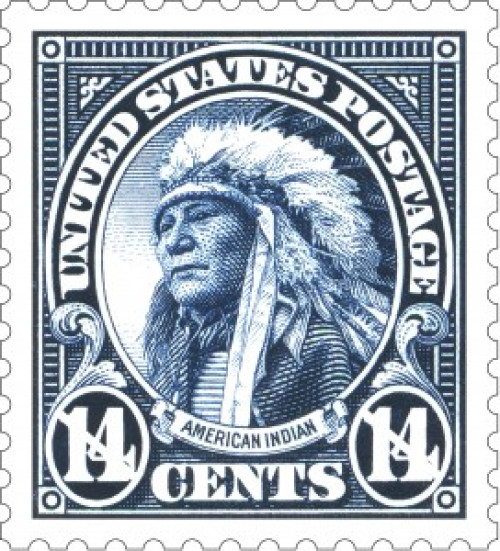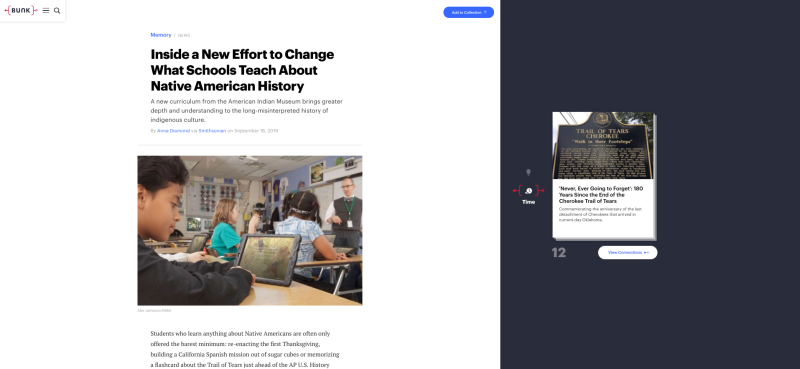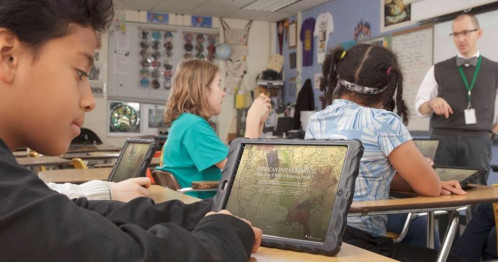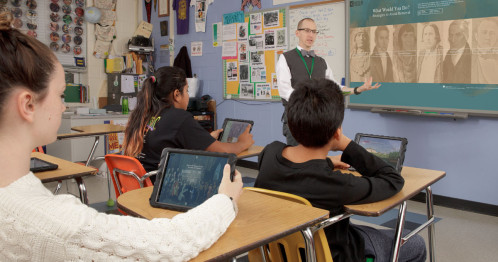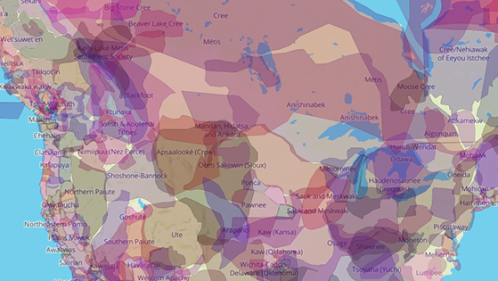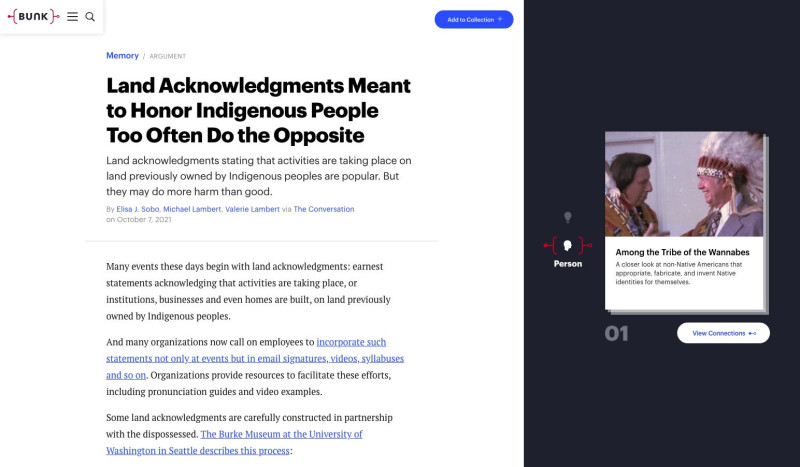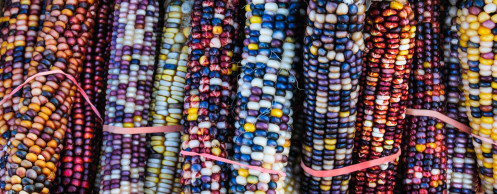This work by New American History is licensed under a Attribution-NonCommercial-ShareAlike 4.0 (CC BY-NC-SA 4.0) International License. Permissions beyond the scope of this license may be available at newamericanhistory.org.
Changing the Narrative
View Student Version
Standards
Council for Accreditation of Educator Preparation (CAEP)
Standard 1. Content and Pedagogical Knowledge The provider ensures that candidates develop a deep understanding of the critical concepts and principles of their discipline and, by completion, are able to use discipline-specific practices flexibly to advance the learning of all students toward attainment of college-and career-readiness standards. Candidate Knowledge, Skills, and Professional Dispositions
1.1 Candidates demonstrate an understanding of the 10 InTASC standards at the appropriate progression level(s) in the following categories: the learner and learning; content; instructional practice; and professional responsibility.
Teacher Tip: The resources provided here help create an open and honest dialogue amongst pre-service teachers, college university faculty, and K12 educators. They may be used in whole or as part of an online or face-to-face professional learning community (PLC) module. It may help if participants create Group Norms before using these learning resources. You may wish to structure the face-to-face discussions using strategies such as a Socratic Seminar. Other options include the use of a Reflective Journal or digital discussion forum if not meeting in a smaller face-to-face PLC, or with a larger class or in-service professional learning setting or online module, to ensure equity of voice.
- Suggested Audience: Pre-service Educators/K-16 Educators & PLCs
- Suggested Timeframe: Two 90 minute sessions, or four 45 minute sessions.
- Suggested Materials: Internet access via laptop, tablet or mobile device; chart paper/markers for group discussions
Key Vocabulary
Colonialism - the power of a dominant nation or culture controlling another for economic or political gain
Cultural appropriation - the use of traditions and cultural artifacts of marginalized communities by dominant communities without permission
Historiography - the study of the writing of history and methods of historians in developing history as an academic discipline
Narrative - a spoken or written account created by oral tradition, the media, pop culture, education, public art, and policies; often reinforcing stereotypes and the status quo while allowing oppressive systems and norms to stay in place.
Dominant narrative - when history is told from the perspective of the people who are in power within a culture.
Read for Understanding
Teacher Tip: We welcome your comments, as well as suggestions for additional resources or ideas which we might include to further this discussion. Please feel free to add your thoughts and contributions to this and all of our Learning Resources using our feedback links at the end of each resource.
Engage:
How have we traditionally learned and taught about American Indians?
Think back to your own elementary school experience. How and when did you learn about the first people who lived here in North America? Chances are your earliest recollections involve some sort of lesson on Pocahontas saving Captain John Smith, or the First Thanksgiving. Take a few minutes to view this video, produced by the Reclaiming Native Truth Project.
Once all participants have had an opportunity to view the video, conduct a discussion considering the following:
- Reflecting back on your own K12 learning experiences, how does this video challenge the narrative you learned as a child about American Indians?
- How does the media, including television, film and social media, influence the way we think about American Indians in modern culture?
- After viewing the video, what are your thoughts about schools or professional sports teams using mascots such as “Indians,” “Braves,” “Redskins,” “Warriors,” “Chiefs,” or “Tribe?”
- What ideas or insights from the video do you agree or disagree with the most?
- How might these insights alter the way you teach about or refer to Indigenous people in the future, both in and out of the classroom?
You may wish to structure the face-to-face discussion using strategies such as a Socratic Seminar. Other options include the use of a Reflective Journal or online discussion forum if not meeting in a smaller face-to-face PLC, or with a larger class or in-service professional learning setting or online module, to ensure equity of voice.
Explore:
In what ways can educators support American Indians in challenging negative stereotypes about America’s Indigenous people?
This episode of BackStory tackled this issue and may help start a dialogue amongst pre-service and K-16 educators, school leaders, and community members. Ask participants to listen to the podcast prior to the pre-service educator lesson or K-12 PLC meeting.
Listen to BackStory episode "Imagined Nations".
Once all participants have had an opportunity to listen to the Backstory episode, “Imagined Nation,” conduct an in-person small group discussion using a variation of the TQE Method. (If pre-service teachers are enrolled in an online course, this could be scheduled via a videoconferencing platform such as Google Meet or Zoom).
Spend 15 minutes sharing your Thoughts, lingering Questions, and Epiphanies (TQE) about the topics discussed in the podcast.
Consider providing some sentence stems to guide the discussion, moving from simple to more complex questions based on the size of the group and how comfortable they are sharing with classmates or colleagues.
- What are your thoughts about the overall discussions in the podcast?
- If you were able to speak to the hosts or guests, what questions might you ask them as a follow-up?
- Which segment, or idea, gave you an epiphany or “Aha!” moment?
- Were there examples of cultural appropriation discussed in the podcast which you can connect to your own personal classroom experience as a student or educator?
- How might some of these topics or ideas change your thinking on how you teach or think about American Indians in your classroom or community?
After 15 minutes, each small group should select 2 examples of questions and answers shared in the small group to become part of a larger class discussion. These may be written on large chart paper or via a shared document online. Once each small group has submitted their two questions, the instructor may conduct a larger group discussion or host an online chat via Twitter or using videoconferencing equipment. Each group shares their top 2 questions and answers, then other groups may ask clarifying questions. Participants may combine and rewrite questions that are similar in content. The discussion concludes when all questions have been shared and discussed.
You may wish to use a Reflective Journal or digital discussion forum if not meeting in a smaller face-to-face PLC, or with a larger class or in-service professional learning setting or online module, to ensure equity of voice.
Explain:
What strategies best help educators change the narrative about Native Americans in a culturally responsive classroom?
Modern historians have rewritten much of the historiography of Indigenous populations in North America in recent years, as educators still face challenges dispelling decades of culturally insensitive teaching practices and misconceptions in the classroom. This excerpt from Bunk introduces teaching resources from the Smithsonian Museum of the American Indian. The page also shares connected stories to help readers increase awareness and build background knowledge.
Read the excerpt on Bunk to learn more about the Smithsonian National Museum of the American Indian and their efforts to improve the way Native American history and culture are taught in schools. As you read, think about the stereotypes and misunderstandings discussed after viewing the video, “Reclaiming Native Truth,” and listening to the BackStory podcast, “Imagined Nations.” Once you have finished, select one of the following activities to further build your background knowledge.
You may choose to read the article in its entirety by selecting the “View on Smithsonian” button at the bottom of the excerpt, or you may save it to a collection to read and annotate later. (For more information about saving Bunk content to a collection, read here: https://www.bunkhistory.org/collections.)
You may also choose to view other content connected to this topic by selecting one of the connection icons (such as the light bulb) and the View Connections button on the right side of the screen.
Turn and talk to a partner (or participate in an online chat or forum if you are a pre-service educator enrolled in an online course.)
- Identify 3 new facts you learned about Native Americans from the readings
- Discuss 2 ideas you found interesting from the reading
- Share 1 question you still have about teaching the history and culture of American Indians
You may find it helpful to use this 321 graphic organizer to structure the conversation.
You may wish to use a Reflective Journal or digital discussion forum if not meeting in a smaller face-to-face PLC, or with a larger class or in-service professional learning setting or online module, to ensure equity of voice.
Access NK360° Teaching Resources here.
Elaborate:
How does your school curriculum compare with the best practices suggested by the Native Knowledge 360° Essential Understandings?
Working in grade-level content teams or PLCs, use the NK360° Teaching Resources to compare and contrast the resources on this site with the way your school, school division, or state curriculum presents information to be taught about American Indians.
Select one of the ten NK360° Essential Understandings to further explore a topic of interest in more depth. Find a partner to discuss how you might implement one or more strategies or learning resources in your class to realign your curriculum in support of the NK 360° materials.
- Discuss potential barriers to implementing elements of the NK360° Teaching Resources into your curriculum.
- What support from division curriculum leaders, administrators or the community would help remove these barriers?
- What would success look like in a classroom within a month of implementation? Within a year? Long term?
You may wish to use a Reflective Journal or digital discussion forum if not meeting in a smaller face-to-face PLC, or with a larger class or in-service professional learning setting or online module, to ensure equity of voice.
Extend:
In what ways can we acknowledge the relationship between the land and the ancestral stewards who came before us?
In recent years you may have seen or heard someone begin a professional conference or meeting with a Land Acknowledgement. Naming and honoring the original peoples who inhabited the land where we live, and work, and learn is one way we might begin to have courageous conversations about how we think about Indigenous peoples. This map may prove useful in helping your school and community leaders, as well as your students, begin to explore this topic.
The U.S. Department of Arts and Culture, a private grassroots organization, provides more information on Land Acknowledgements as a means of opening up a dialogue with colleagues, students, and community leaders. Their #HonorNativeLand Guide provides additional tools and resources for schools exploring ways to decolonize their curriculum.
Not all Indigenous peoples are in agreement about the practice of using a Land Acknowledgement. This Bunk excerpt explores the topic in more depth. Before adding a Land Acknowledgement to the agenda for a public event, a public-facing document, or as part of a learning experience for students, use the Native-land.ca map territories map to access and contact the local nations in your area and open a dialogue on the topic.
The Native Governance Center recently hosted a forum and created a guidance document to address the topic of moving beyond symbolic gestures of Land Acknowledgement and towards true allyship. Take some time to explore these resources and discuss how your schools might consider opportunities to further support Native American students and local Indigenous peoples.
You may wish to use a Reflective Journal or digital discussion forum if not meeting in a smaller face-to-face PLC, or with a larger class or in-service professional learning setting or online module, to ensure equity of voice.
View this learning resource on Bunk.
Additional Resources:
This article provides suggestions for ways schools can respectfully address the Thanksgiving holiday in a culturally responsive way:https://www.smithsonianmag.com/blogs/national-museum-american-indian/2019/11/27/do-american-indians-celebrate-thanksgiving/This article shares an update on recent Supreme Court legislation of merit: https://www.theatlantic.com/ideas/archive/2020/07/mcgirt-case-historic-win-tribes/614071/?utm_source=twitter&utm_medium=social&utm_campaign=share
The Smithsonian recently updated the language on their guide to Native American Land Acknowledgements:https://americanindian.si.edu/nk360/informational/land-acknowledgementCitations:
“Imagined Nations." BackStory Archives, New American History. Originally produced by Virginia Humanities, November 22, 2014. https://backstory.newamericanhistory.org/episodes/imagined-nations.
Bunk History. (2019). Inside a New Effort to Change What Schools Teach About Native American History. (online) Available at: https://www.bunkhistory.org/resources/4946.
“Changing the Narrative about Native Americans: A Guide for Allies.” Reclaiming Native Truth. First Nations Development Institute, 2018. https://www.firstnations.org/publications/changing-the-narrative-about-native-americans-a-guide-for-allies/.
“Honor Native Land: A Guide and Call to Acknowledgement.” U.S. Department of Arts and Culture. Accessed November 1, 2020. https://usdac.us/nativeland.
Native Land. Native Land Digital. Accessed November 1, 2020. https://native-land.ca/.
“Reclaiming Native Truth Intro.” Reclaiming Native Truth Intro. First Nations Development Institute, January 22, 2018. https://www.firstnations.org/videos/reclaiming-native-truth-intro/.
“Resources: Beyond Land Acknowledgment.” Native Governance Center, October 27, 2021. https://nativegov.org/resources/?_sft_resource_topic=land-acknowledgement.
Sobo, E., Lambert, M., & Lambert, V. (2021, October 7). Land acknowledgments meant to honor indigenous people too often do the opposite. Bunk History. Retrieved from https://www.bunkhistory.org/resources/8864.
Zotigh, Dennis. “Do American Indians Celebrate Thanksgiving?” Smithsonian.com. Smithsonian Institution, November 26, 2019. https://www.smithsonianmag.com/blogs/national-museum-american-indian/2019/11/27/do-american-indians-celebrate-thanksgiving/.
View this Learning Resource as a Google Doc


